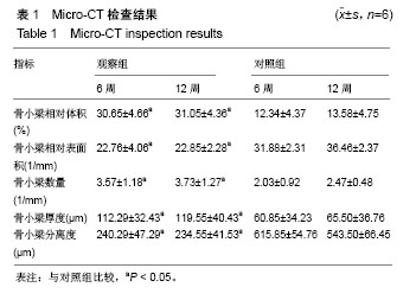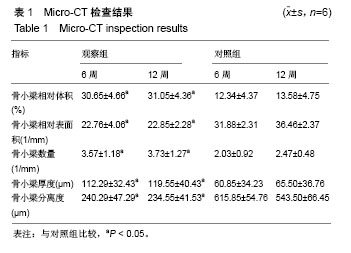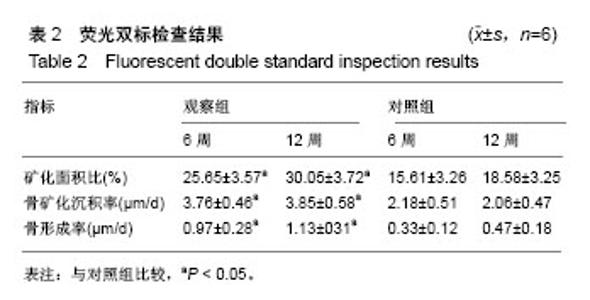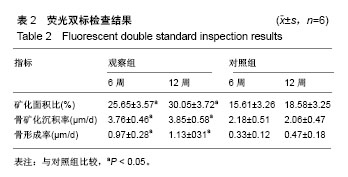| [1] 何越,田智泉,王亮,等.天然煅烧骨修复材料(骼瑞)修复动物骨缺损的有效性研究[J].实用口腔医学杂志,2015,31(2):167-170.[2] 张兆强,王启朋,江穗,等.冻干同种异体下颌骨复合自体松质骨移植修复下颌骨缺损[J].全科口腔医学电子杂志,2018,5(7):7-10.[3] 胡金龙,王静成,颜连启.组织工程学技术治疗骨缺损的最新研究进展[J].中国矫形外科杂志,2013,21(2):150-153.[4] 王春晓,李祥,罗云.多孔钛合金支架结构设计及其抗压强度分析[J].上海交通大学学报,2016,50(2):165-168.[5] 李洋,陈长军,王晓南,等.生物医用多孔钛及钛合金的研究进展[J].现代制造工程,2015,(7):144-148.[6] Emery P, Breedveld F, van der Heijde D, et al. Two-year clinical and radiographic results with combination etanercept-methotrexate therapy versus monotherapy in early rheumatoid arthritis. Arthritis Rheum. 2015;62(3):674-682.[7] 佟世超.低强度振动载荷协同多孔钛合金对长骨骨缺损修复的作用效果及机制研究[D].西安:第四军医大学,2016.[8] 李晴,李树春,伍立乾,等.双层膜技术在上颌前牙区延期种植骨缺损修复中的应用[J].中国实验诊断学,2017,21(1):13-16.[9] 彭惠,张巍,柳洪志.低钙对微种植体骨结合影响的实验研究[J].中华口腔正畸学杂志,2010,17(2):70-72.[10] 付君,倪明,陈继营,等.个性化3D打印多孔钛合金加强块重建重度髋臼骨缺损的生物相容性和生物力学研究[J].中国矫形外科杂志,2018,26(10):945-950.[11] 高贺奇,曹璐,唐振宏,等.低强度振动载荷刺激对于三维多孔钛合金内成骨细胞粘附和增殖的影响[J].现代生物医学进展,2016, 16(22):4233-4236.[12] 苏可欣,季平,王涵,等.3D打印多孔钽种植体对骨整合影响的实验研究[J].华西口腔医学杂志,2018,36(3):291-295.[13] 刘永庆,李琪佳,崔逸爽,等.多孔金属骨科内植物的研究进展[J].中国老年学杂志,2017,37(12):3080-3083.[14] 佟世超,唐振宏,刘娟,等.低强度振动载荷对兔长骨再生速率的影响[J].中国医学物理学杂志,2016,33(4):364-367.[15] 李大成,付莹,陈望军,等.多孔钛合金支撑棒在踝关节损伤中的应用及生物力学性能[J].中国组织工程研究, 2017,21(34): 5413-5417.[16] 张元平,崔继秀,裴国献,等.兔股骨缺损模型的建立[J].中国组织工程研究,2006,10(5):95-97.[17] 邵惠锋.3D打印活性陶瓷骨修复支架研究[D].杭州:浙江大学, 2017.[18] 鲍小刚.载rhBMP2/rhVEGF165凝胶的解剖仿生人工骨修复兔胫骨大段骨缺损的研究[D].上海:第二军医大学,2016.[19] 陈国仙,林宗锦,李国山,等.低强度全身振动与阿仑膦酸钠防治去势大鼠骨质疏松的对比研究[J].中国康复医学杂志,2016,31(10): 1060-1066.[20] 汪建,赵滨,杨士彩,等.持续与间歇性低载荷振动对成骨细胞增殖及分化能力影响的实验研究[C].第十一届全国生物力学学术会议暨第十三届全国生物流变学学术会议,2015:27-28.[21] 汪建.持续与间歇低载荷振动对成骨细胞增殖及分化能力影响的实验研究[D].长春:吉林大学,2015.[22] 樊瑜波,修凯华,董骧,等.力学载荷对骨整合影响的动物实验研究[J].中国科学,2009,39(3):253-260.[23] Zhang L, Liu W, Zhao J, et al. Mechanical stress regulates osteogenic differentiation and RANKL/OPG ratio in periodontal ligament stem cells by the Wnt/β-catenin pathway. Biochim Biophys Acta. 2016;1860(10):2211-2219. [24] 周鹏,赵辉,吴宇黎,等.钛合金假体表面涂层微孔孔径和孔隙率对骨整合的影响[J].山东医药,2017,57(16):12-15.[25] 吴巧瑞,姚熊亮,孙龙泉.基于传感器的细长体横向低频振动载荷辨识[J].传感器与微系统,2015,34(1):63-65.[26] 赵振华,陈伟,吴铁鹰.高低周复合载荷对钛合金疲劳裂纹扩展性能的影响[J].机械科学与技术,2012,31(4):643-647.[27] Li J, Bao Q, Chen S, et al. Different bone remodeling levels of trabecular and cortical bone in response to changes in Wnt/β-catenin signaling in mice. J Orthop Res. 2016;35(4): 812-819. [28] Cho BK, Kim YM, Kim DS, et al. Outcomes of the modified brostrom procedure using suture anchors for chronic lateral ankle instability-a prospective, randomized comparison between single and double suture anchors. J Foot Ankle Surg. 2013;52(1):9-15. |





